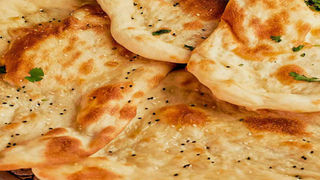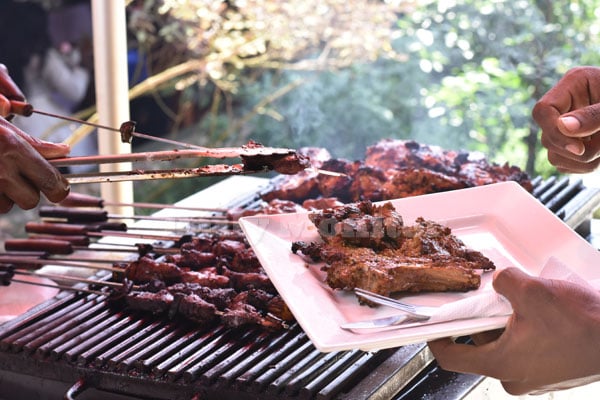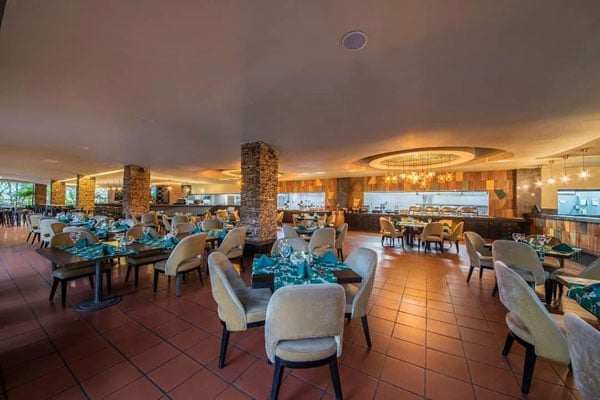
Flatbreads. PHOTO/FILE
|Dining
Prime
Naan–Glorious Tandoori baked flat breads in your kitchen
What you need to know:
- Review. Flatbreads range from below one millimetre to a few centimetres thick so that they can be easily eaten without being sliced.
Makes between a dozen to 15/16 pieces
Flatbreads have various different names depending on the country of origin. These names range from Armenian, Peda, Greek, Arab, Syrian, Euphrates bread and of course the iconic Indian Naan. Incidentally, what many of you may not know is that this dough can be formed into hard rolls, long thin rolls and flat envelopes for stuffing with a wide variety of both non exotic and exotic sandwich fillings.
We are told that flat breads were the first food to be cooked in an Indian oven that is commonly known as a tandoor and I swear that once you have mastered the technic of how to make them in your own kitchen you will never make our conventional chapattis. For my money, naan bread is simply tops and unbeatable, and all the more so because of the light, buttery, yeasted combination which together gives amazing results.
Traditionally, naan is cooked on the walls of the tandoor. In Northern India, nearly every residential neighborhood has a bakery where barefoot bakers roll and bake naan to order from morning to dusk and in many cases late into the night.
There is nothing terribly complicated about the procedure; as soon as you order your naan, than the baker takes a soft white ball of dough and rolls it into a flatbread. Next there are a few slaps from hand to hand, then he stretches the bread into its traditional teardrop shape. Using a pillow like holder known as a gaddi (a throne), the baker then presses the bread on to the walls of the hot tandoor. Why the use of the gaddi?
The instrument protects his hand from being scorched, after all the temperature of the tandoor can reach 371 d Celsius! The bread emerges from the oven beautifully puffed and blistered on top and crisp and brown on the bottom while at the same time being sweet and smoky, moist, pliable and absolutely delicious.
This recipe has been adapted for a muchomo grill or a sigiri which are locally available and I found that the best results were obtained from cooking the naan directly on the grate over the flames. Nevertheless, using a hand held portable barbecue grill is another novel way of making naan using a sigiri.
INGREDIENTS:
* 2 ¼ teaspoons of active dry yeast
* 5 tablespoons sugar
* 1 cup warm water
* 1 egg, beaten
* 3 tablespoons milk
* 2 teaspoons salt
* 4 ½ to 5 cups wheat flour, plus more for
dusting and rolling
* 1 tablespoons vegetable oil
* 4 tablespoons unsalted butter.
* A hand held portable barbecue grill
METHOD:
1. Combine the yeast, one tablespoons of the sugar and ¼ cup of the water in a large bowl and let stand until foamy which take no more than ten minutes. Stir in the remaining sugar and water, the egg, milk and salt. Next you will add the 4 cups of the flour and stir to form a dough that is soft and pliable but not sticky. Knead the dough until smooth and elastic using your hands or a dough mixer. This shouldn’t take more than eight minutes.
2. Use a half a tablespoon of the oil to lightly oil a large bowl and place the dough inside and brush with the remaining oil. Cover with a clean kitchen towel and let rise in a warm and draft free place until it has doubled in bulk which should take anywhere from an hour to one and a half hours. Punch down the dough and pinch off two-inch pieces and place them on a lightly floured baking sheet and cover with a dampened clean kitchen towel and let rise again until puffy allowing about 30 minutes.
3. Preheat the grill to high and let the fire reduce to smoldering embers. Remember, that the idea is to grill the naan using the heat from the grill and so it is important to bear this in mind because in case the flame is too high, your naan will simply cook too fast and actually become burnt on the outside while the inside remains uncooked.
4. When you are ready to cook, place a rolling pin and cutting board along with bowl of flour and the melted butter near the grill. Roll out the dough on a lightly floured cutting board to form a disk about five to six inches in diameter. Gently slap the disk from one hand to another so as to stretch it into an elongated seven to eight inch circle and stretch it into a traditional tear drop shape and immediately lay on to the hot grate. However, you do not have to stretch the dough into a tear drop shape; feel free to just roll it and lay it on to the hot grate.
5. If you are using the hand held portable barbecue grill, depending on the size of the grill, you can cook anywhere from two to four or five naan bread at a time. The other advantage of using the hand held grill is that turning the bread onto the other side becomes a simple matter.
6. Cook the bread until the bottom becomes crusty and browned and the top is puffed and blistered which should take no more than three to four minutes. Brush with the butter and invert the naan and grill the other side until lightly browned again allowing no more than four minutes. Brush each naan with more butter as it comes off the grill and serve we find that it best served piping hot but this is not a deal breaker. For the busy housewife, keeping it warm in foil paper and on a low oven for a while will do nicely. Serve whole, or cut each naan into three wedges as you please.
7. All bread freezes very well and you might wish to make a large batch and freeze some of your naan when you are ready to eat them, defrost and warm in a skillet or frying pan over a very low flame until they are heated through and serve at once. Nobody will be the wiser that they were in the freezer. A microwave will also come in handy for this exercise.




